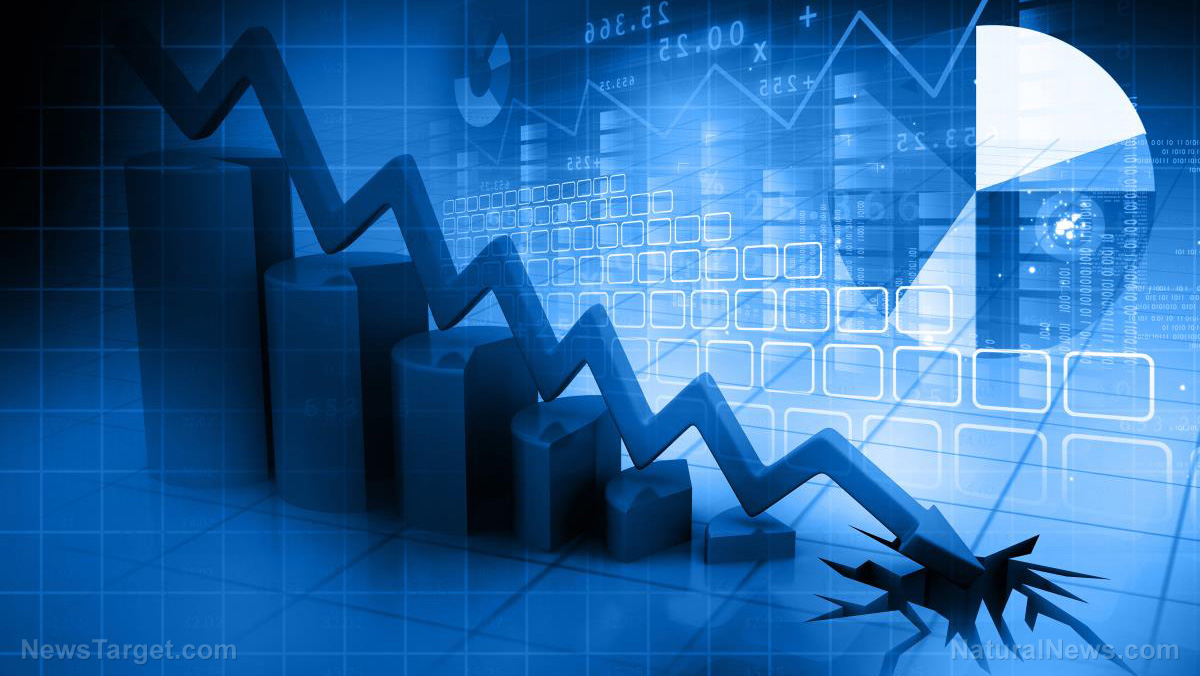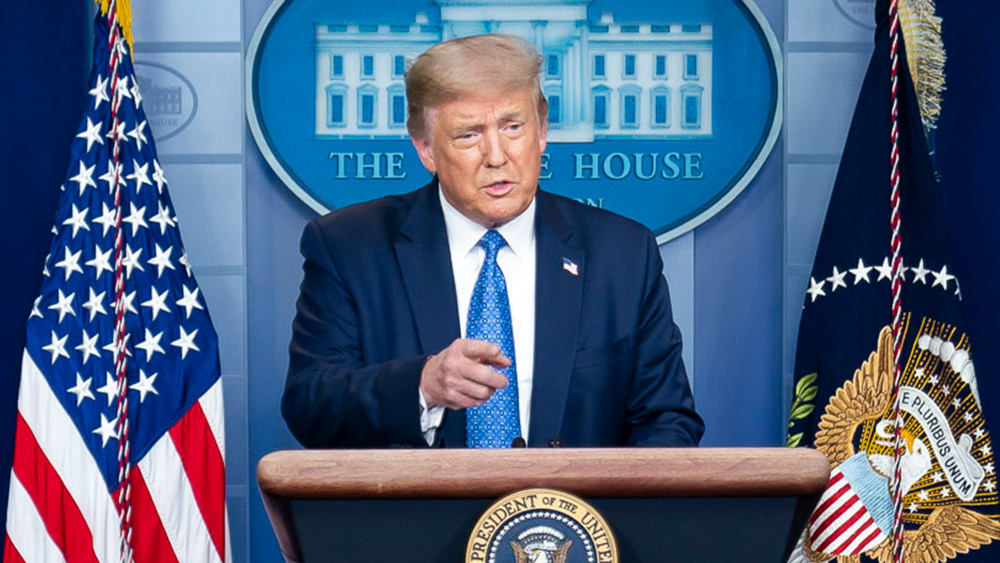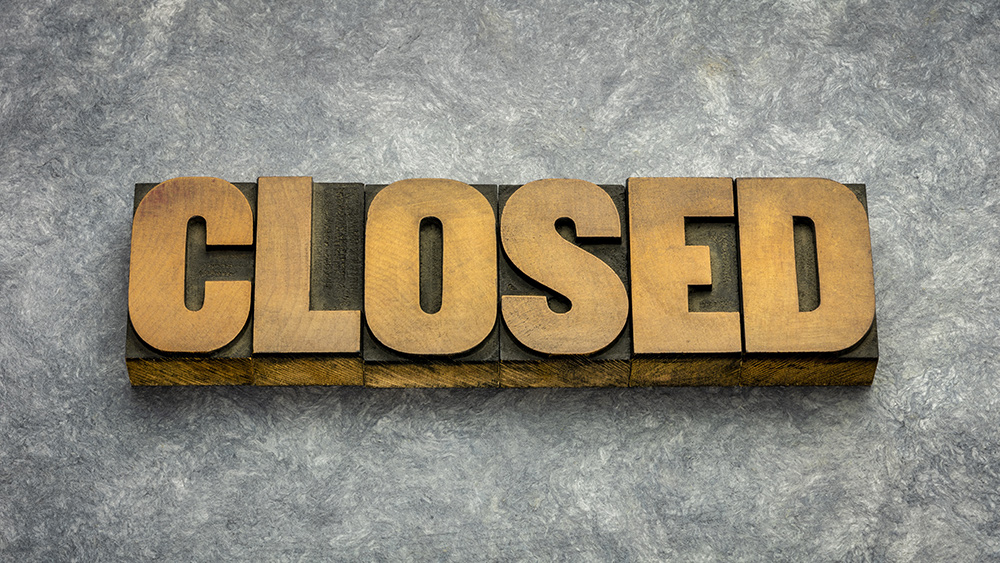Silicon Valley Bank collapse biggest since Great Recession as FDIC promises to cover ALL deposits, not just first $250K (UPDATED)
03/13/2023 / By JD Heyes

The demise of Silicon Valley Bank is the second-largest bank collapse in the history of the United States. The bank’s collapse on Friday has sparked concerns among customers who risk losing deposits worth tens of billions of dollars. The failure of the bank is only surpassed by the collapse of Washington Mutual in 2008.
When the Federal Deposit Insurance Corporation closed SVB, the bank had assets worth $209 billion. In comparison, Washington Mutual had $307 billion in assets when it met its end, the UK’s Daily Mail reported this week.
The FDIC, a U.S. government-owned corporation that ensures bank deposits of up to $250,000, has stated that SVB’s customers with accounts of that amount or lower will be able to access their funds by Monday morning.
Update: Yesterday the US Treasury announced that all account funds would be covered by the FDIC, not just those of $250K or lower.
However, several of SVB’s depositors are corporate clients with significantly larger accounts and must now face an indefinite wait for their funds. Investors who hold SVB bonds are also set to experience substantial losses, the report said.
The collapse of Washington Mutual transpired during the 2008 global financial crisis. The bank had approximately 43,000 employees, 2,200 branches, and deposits amounting to $188.3 billion in late 2007. However, it was bankrupt by the end of the subsequent year.
The bank’s downfall was largely attributed to the burst of the housing bubble in the United States. Washington Mutual failed after customers withdrew $16.7 billion within ten days, resulting in an unmanageable bank run, the report added.

Similar to SVB, the FDIC seized Washington Mutual on September 25, 2008, and assumed control of the bank. JPMorgan Chase acquired Washington Mutual for $1.9 billion, as regulators often merge bankrupt financial institutions with larger, more stable companies to mitigate the impact.
It remains uncertain how the FDIC will handle the aftermath of the SVB takeover, though, the Daily Mail noted.
The outlet noted:
The largest losses after the fall of Washington Mutual were among bondholders, shareholder and investors, as opposed to retail customers. Bondholders lost a reported $30 billion, while investors clawed back just five cents per share. At the beginning of 2007, shares were worth about $45 each. After Washington Mutual and Silicon Valley Bank, the third largest bank failure in the US happened in 1984, when Continental Illinois failed with approximately $40 billion in assets.
The bank, which has a history dating back to the 1800s, was granted a bailout worth approximately $13.5 billion, consisting of a blend of government funds and fresh capital. The rescue operation popularized the phrase “too big to fail,” which was mentioned by Rep. Stewart McKinney (R-Conn.) during the congressional hearings regarding the FDIC’s intervention. Continental was procured by Bank of America in 1994, said the outlet.
Prominent figures in the finance sector and Silicon Valley are publicly urging the federal government to prompt another bank to take on Silicon Valley Bank’s responsibilities and assets following its collapse on Friday, according to a report from CNBC.
As per regulatory filings from December, over 95 percent of the bank’s deposits were not insured, meaning they had more than $250,000 in their accounts. And now, many of these depositors are startups who fear that they may not be able to pay their employees this month, potentially resulting in significant failures and job losses across the tech industry.
Investors are worried that these potential failures may erode trust in the banking sector, particularly mid-sized banks with less than $250 billion in deposits. These banks are not categorized as “too big to fail” and do not have to undergo routine stress tests or other safety measures established after the 2008 financial crisis, CNBC noted further.
Venture capitalist and former tech CEO David Sacks urged the federal government to prompt another bank to purchase SVB’s assets, writing on Twitter, “Where is Powell? Where is Yellen? Stop this crisis NOW. Announce that all depositors will be safe. Place SVB with a Top 4 bank. Do this before Monday open or there will be contagion and the crisis will spread.”
Where is Powell? Where is Yellen? Stop this crisis NOW. Announce that all depositors will be safe. Place SVB with a Top 4 bank. Do this before Monday open or there will be contagion and the crisis will spread.
— David Sacks (@DavidSacks) March 10, 2023
Sources include:
Submit a correction >>
Tagged Under:
2008 Financial Crisis, bank collapse, bank run, Banking Collapse, banks, big government, Collapse, depositors, dollar demise, economic riot, FDIC, finance riot, financial collapse, Great Recession, money supply, pensions, risk, Silicon Valley Bank, SVB collapse, too big to fail, uninsured depositors
This article may contain statements that reflect the opinion of the author
RECENT NEWS & ARTICLES
COPYRIGHT © 2017 COLLAPSE.NEWS
All content posted on this site is protected under Free Speech. Collapse.news is not responsible for content written by contributing authors. The information on this site is provided for educational and entertainment purposes only. It is not intended as a substitute for professional advice of any kind. Collapse.news assumes no responsibility for the use or misuse of this material. All trademarks, registered trademarks and service marks mentioned on this site are the property of their respective owners.





















